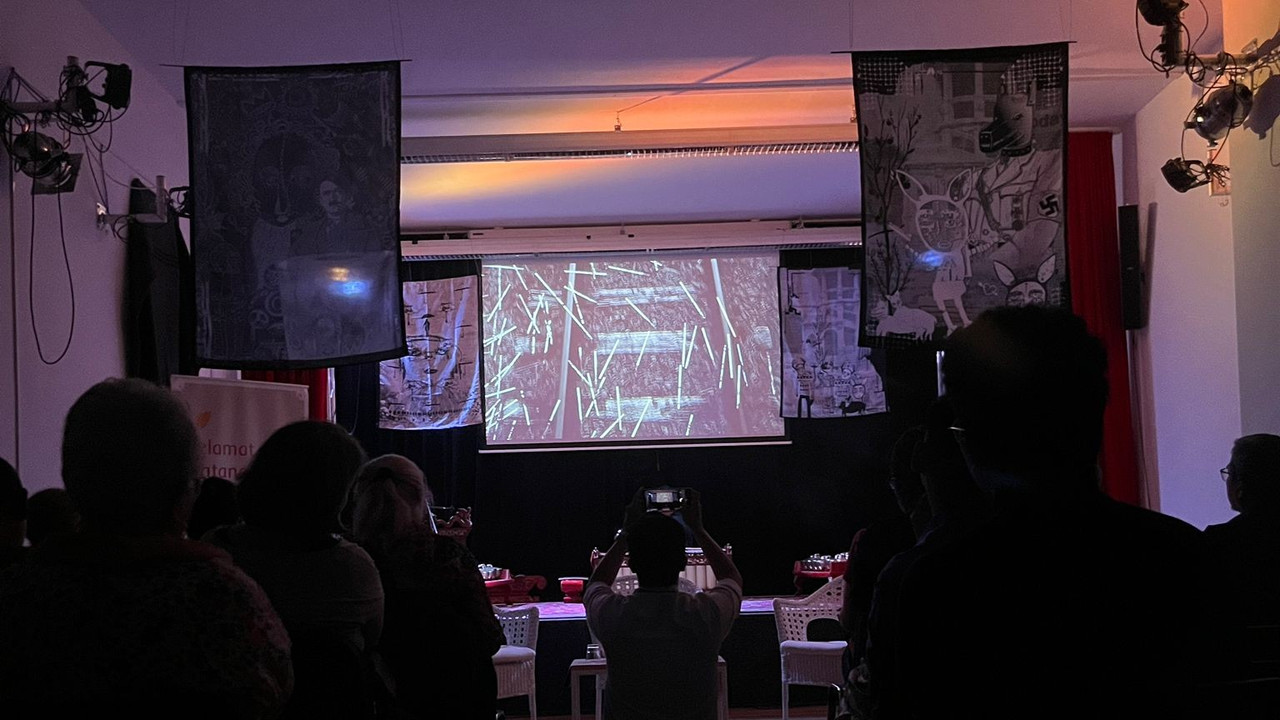Nieselregen / Gerimis
Project Description
“Nieselregen / Gerimis” is an audio-visual composition based on the work of the Indonesian author Triyanto Triwikromo. Similar to our former collaboration, I implement distant-reading technique on his texts in order to find “retrieved information” within the text.
For me, this novel is a process of myth upon myth— that is, as a connection between levels of symbols and their meanings. Thus, Auschwitz, Hitler, War, Rape, Seeleninsel and the World of the Dead in the novel are no longer a matter of chronology, biographical characters, historical facts, or geographical locations—rather, they are a labyrinth of life that must be explored as an inner journey to hone our humanity. As if using the method of ‘theme and variation’ ad absurdum, all the signs and symbols in the novel appear in diverse forms, inviting a plurality of meanings.
We presented the text and the audio-visual composition along the graphic works of Muchammad Salafi Handoyo and the translation of the text by Gudrun Ingratubun at the Haus der Indonesischen Kulturen in Berlin.
The novel ‘Seperti Gerimis Merah di Auschwitz’ (Like Red Drizzle in Auschwitz) centres on Rutha, a Jewish woman from Gdansk, whose life story unfolds between Poland and Berlin and tells of pain, survival and humanity.

The event combines literary, musical and visual forms of expression: excerpts from the novel are read in German translation by Gudrun Ingratubun and the author himself; composer and musician Bilawa Ade Respati responds to the symbolic language of the novel with an experimental composition that combines traditional sounds and algorithmic processes. Between gamelan and digital synthesis, a sound emerges that captures the spiritual dimension of the narrative; finally, artist Muchammad Salafi Handoyo presents graphic works that arose from his intensive engagement with the novel.
In the novel, Auschwitz is treated not as a historical place, but as a symbolic space – a myth that connects suffering, resistance and hope across time and cultures. In text, sound and image, an artistic echo of the book’s central message unfolds: it is not revenge, but humanity and compassion that show the way out of trauma.
(From the program text by Birgit Steffan, translated from German)
Credits
Text: Triyanto Triwikromo
German translation: Gudrun Ingratubun
Music and video: Bilawa Ade Respati
Graphics: Muchammad Salafi Handoyo
With the kind support of the Haus der Indonesischen Kulturen in Berlin.